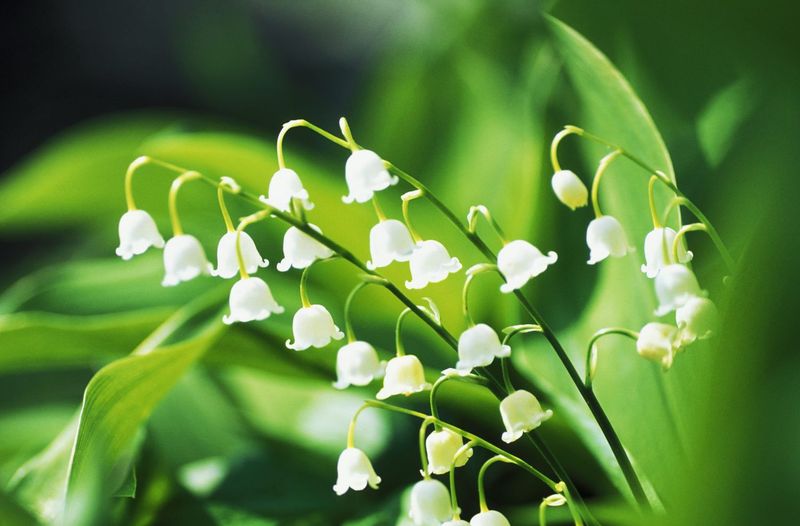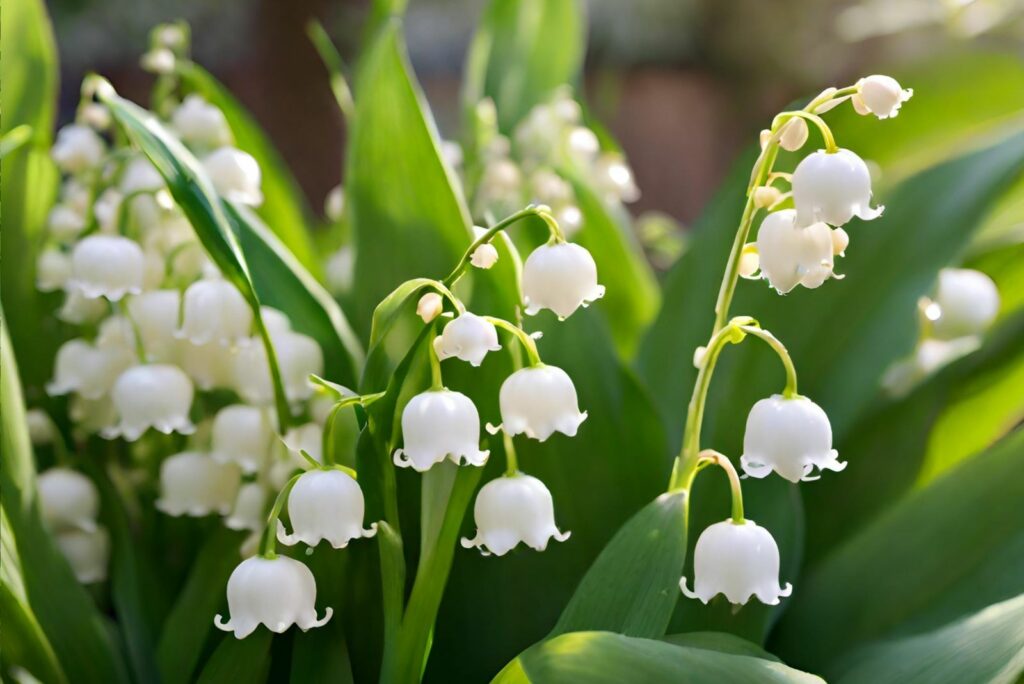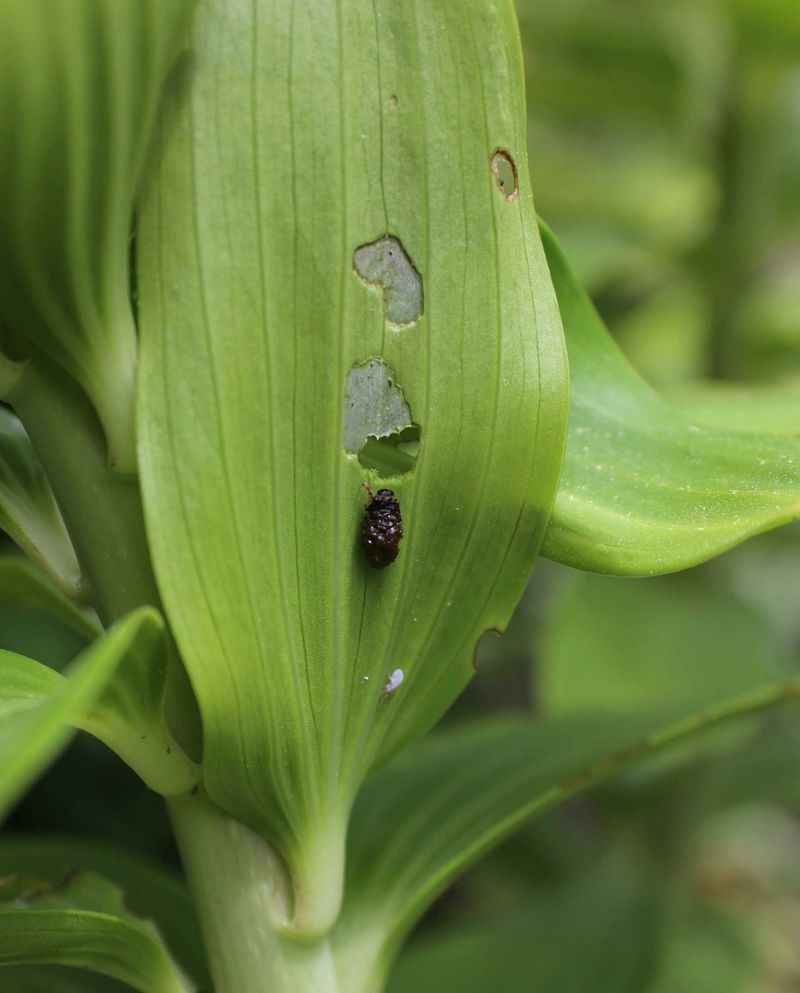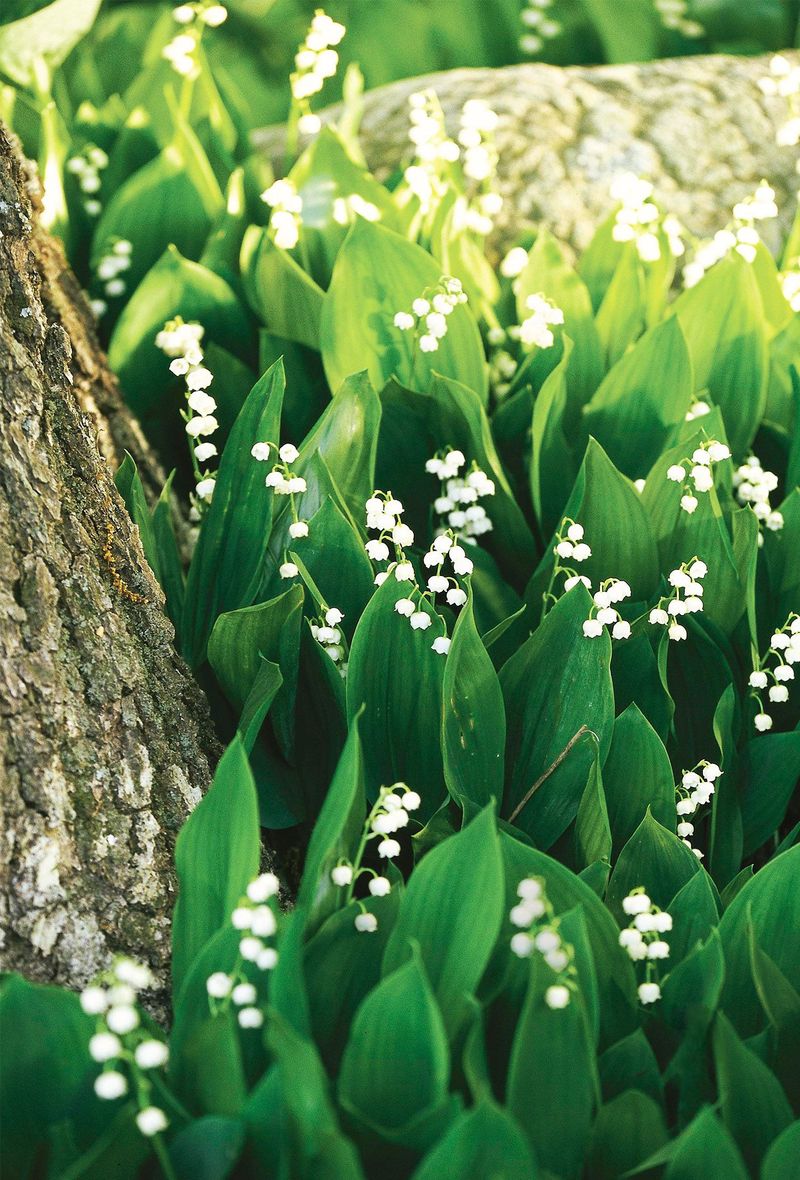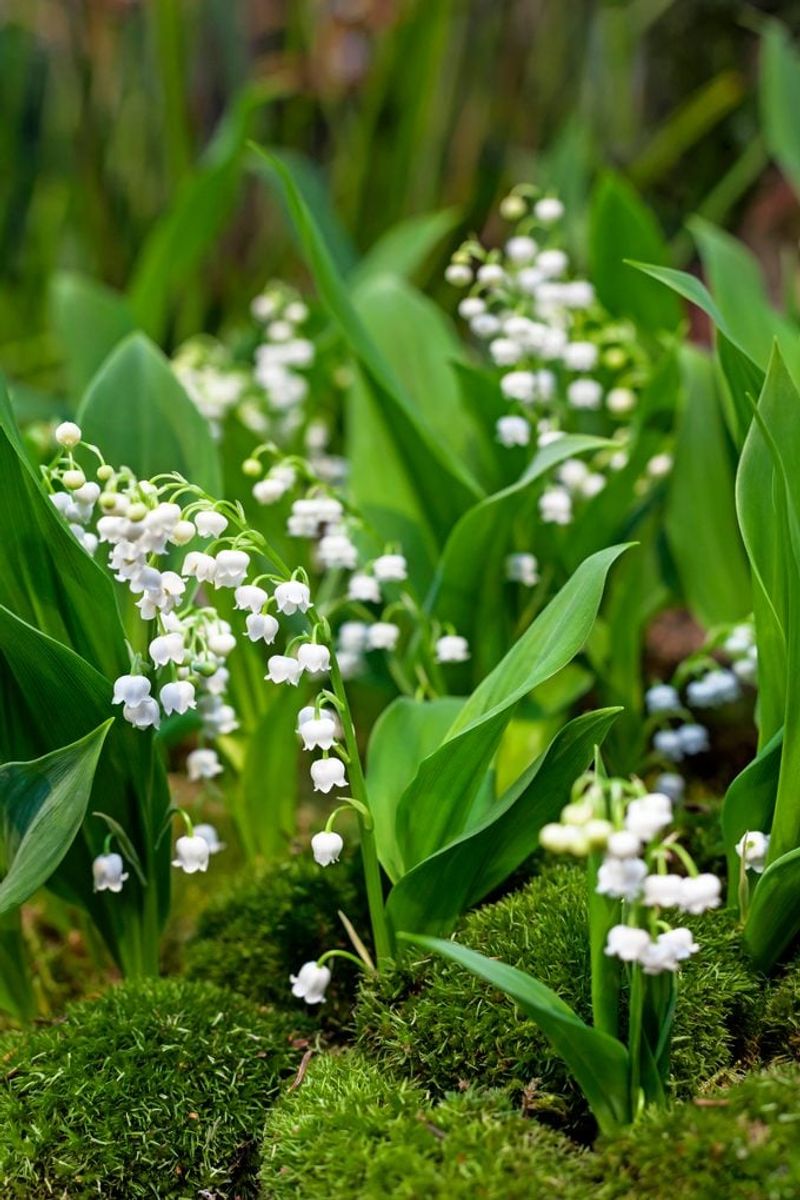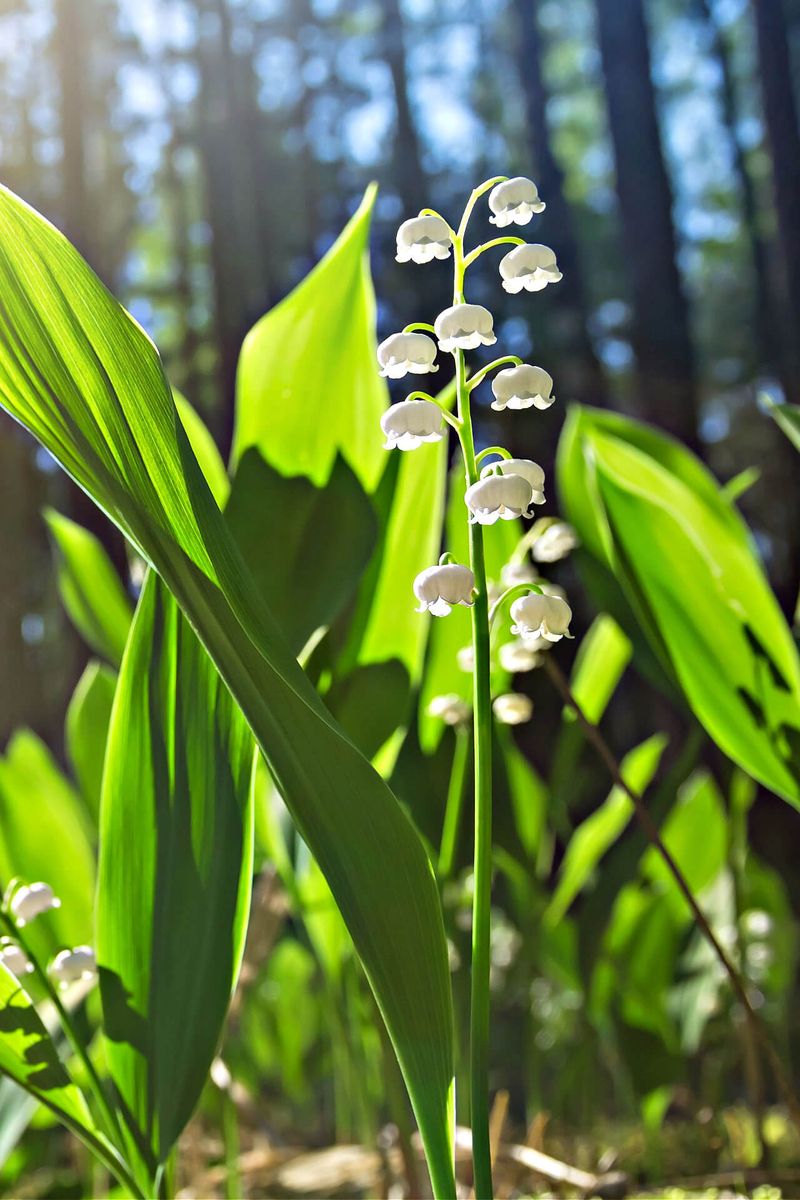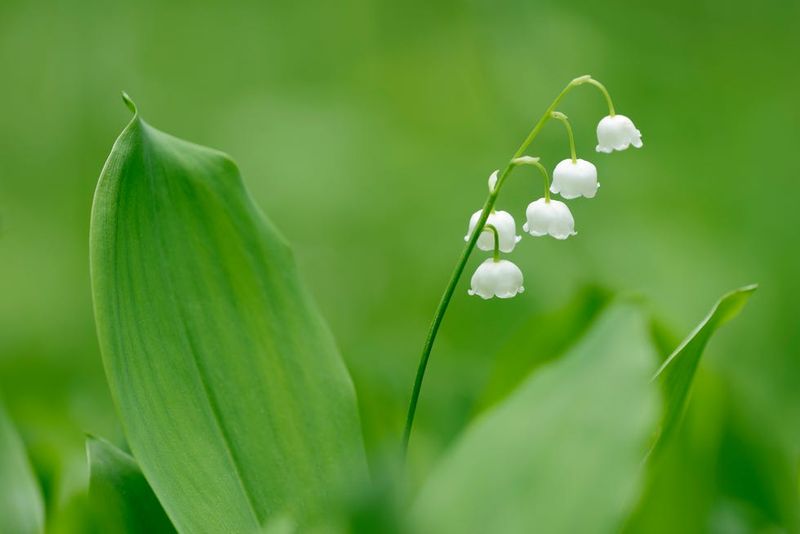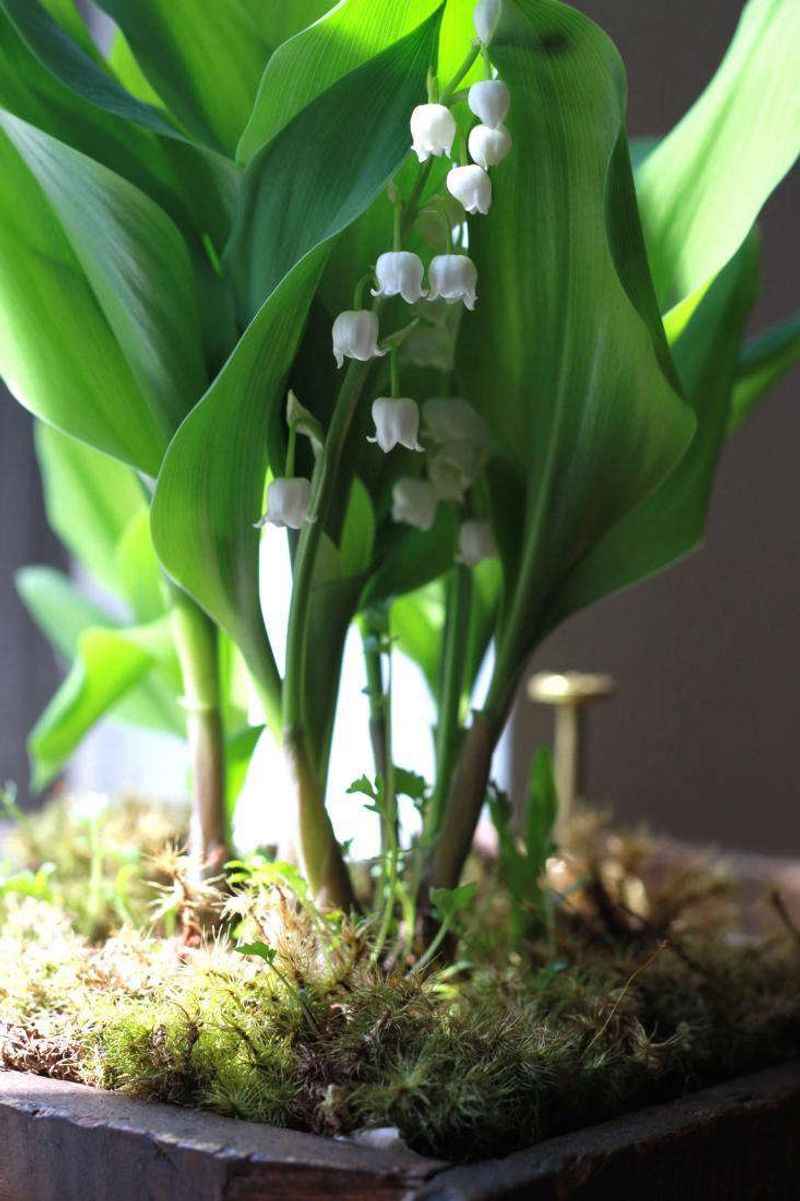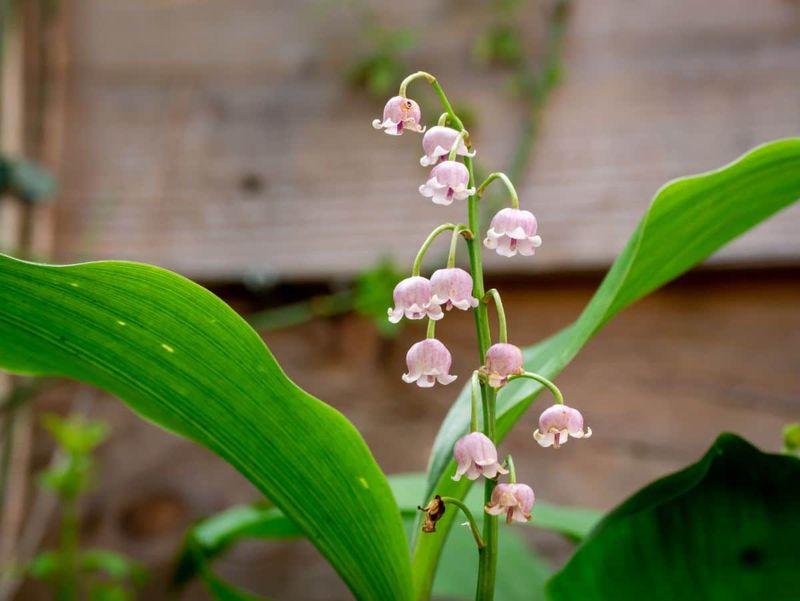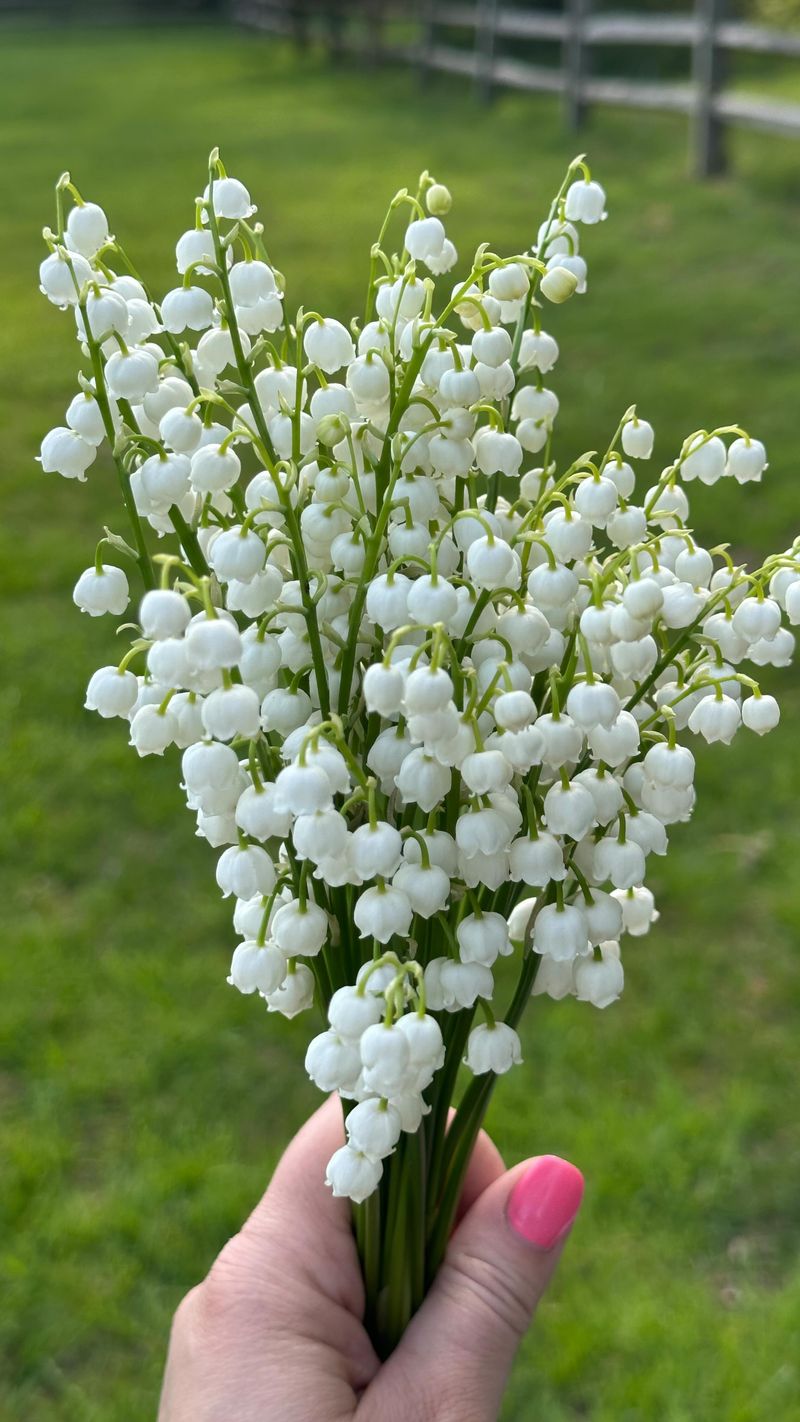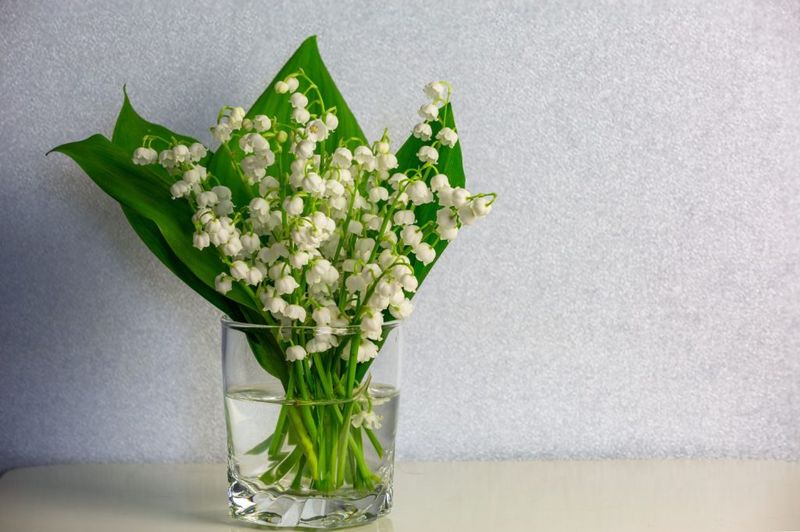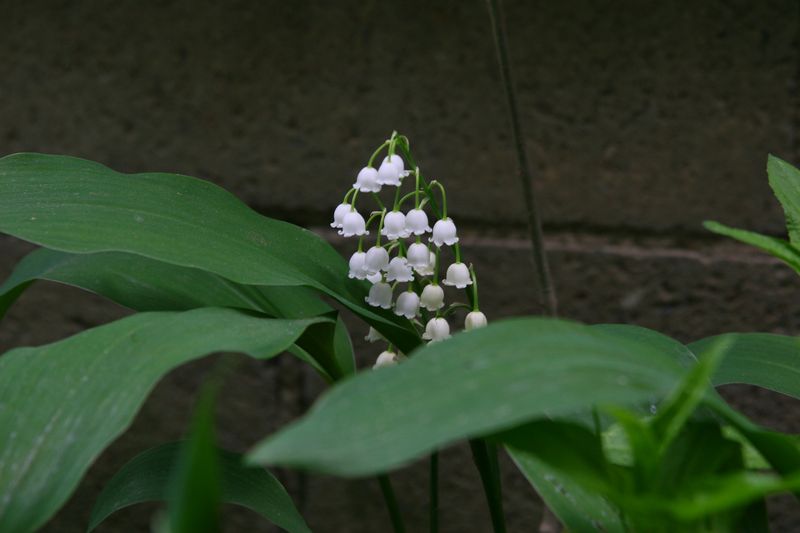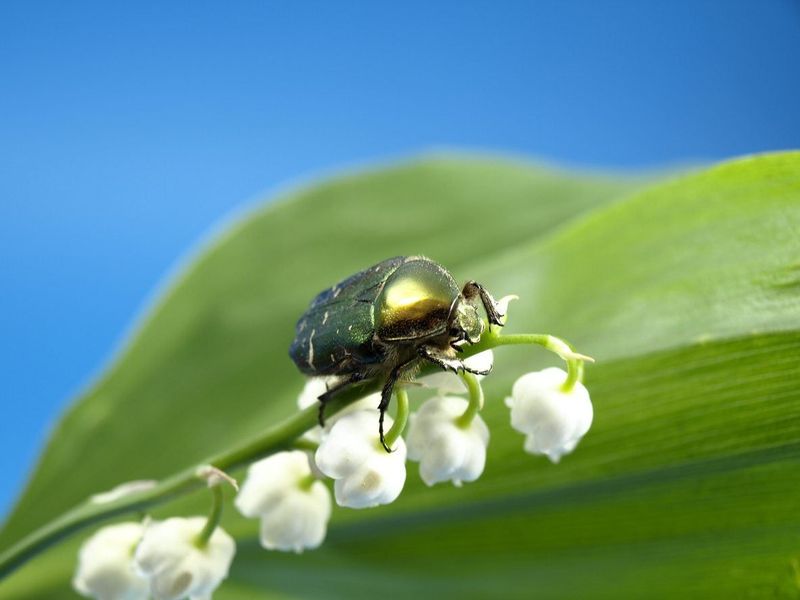Lilies of the valley may look sweet, but can they really keep pests at bay? Before you plant them as your garden’s secret weapon, there are a few things you need to know.
From toxic traits to pest-repelling potential, these 14 facts could change how—and where—you grow them.
1. Natural Pest Deterrent Powers
Lilies of the valley contain compounds that certain garden pests find absolutely revolting. Aphids, thrips, and some beetles will often avoid areas where these flowers grow because of their strong scent.
The plant produces glycosides that create an unpleasant environment for many crawling insects. Garden mice and voles also tend to steer clear of lily of the valley patches.
While not a complete pest solution, incorporating these plants as part of your integrated pest management can reduce the need for chemical controls in specific garden areas.
2. Highly Toxic Warning
Despite their beauty, every part of lily of the valley plants contains powerful cardiac glycosides. Ingesting even small amounts can cause vomiting, dizziness, rashes, and in severe cases, heart problems.
Children are particularly vulnerable due to their curiosity about the attractive red berries that appear after flowering. Pets, especially dogs and cats, can suffer serious health consequences if they chew on the leaves or stems.
Always wear gloves when handling these plants to prevent skin irritation, and consider carefully before planting if you have young children or pets.
3. Selective Pest Control
Not all pests run from lilies of the valley. While they deter many insects, they won’t help with slugs or snails, which may actually enjoy munching on their leaves.
Japanese beetles sometimes target these plants, creating holes in the foliage. Certain aphid species can develop resistance to the plant’s natural compounds over time and may eventually colonize them.
For comprehensive pest management, combine lilies of the valley with other pest-repelling plants like marigolds or lavender to create a more effective defense system in your garden.
4. Shade-Loving Nature
Unlike many pest-repelling plants that demand full sun, lilies of the valley thrive in shady spots where other flowers struggle. Their preference for cool, dark areas makes them perfect for north-facing walls or under tree canopies.
Morning sun with afternoon shade provides ideal growing conditions. In too much direct sunlight, their leaves may yellow and flowers will quickly fade.
This shade tolerance allows you to extend your pest control strategy to darker corners of your garden where mosquitoes and other shade-dwelling pests often hide.
5. Aggressive Spreading Habit
Gardeners beware—these delicate-looking flowers are underground invaders! Lily of the valley spreads rapidly through underground rhizomes, forming dense colonies that can overtake neighboring plants.
What starts as a small cluster can expand several feet in all directions within just a few growing seasons. Their tenacious root system makes them difficult to remove once established.
Plant them in contained areas using deep barriers that extend at least 10 inches into the soil, or grow them in pots to harness their pest-repelling benefits without the takeover.
6. Companion Planting Strategy
Strategic placement maximizes lily of the valley’s pest-repelling potential. Plant them near roses to help ward off aphids and thrips that typically plague these flowering shrubs.
Hostas benefit from lily of the valley neighbors as they help deter leaf-munching insects. Avoid planting them near shallow-rooted plants or those requiring frequent division, as lily of the valley’s aggressive roots will compete for resources.
Creating a border of these fragrant flowers around vulnerable plants can establish a protective perimeter that many pests will avoid crossing.
7. Seasonal Protection Timeline
Lily of the valley offers pest protection primarily during spring and early summer when the plants are actively growing and flowering. Their peak repellent power coincides with their blooming period in May.
By mid-summer, their effectiveness diminishes as the foliage begins to yellow and dormancy approaches. For year-round pest management, complement them with late-season repellent plants like chrysanthemums.
The timing works perfectly for protecting spring seedlings and young plants when they’re most vulnerable to early-season pest damage.
8. Moisture Requirements
Consistently moist soil keeps lily of the valley’s pest-repelling properties at their strongest. When these plants dry out, they produce fewer of the compounds that deter insects.
Regular watering during dry spells maintains their vigor and effectiveness. A 2-inch layer of organic mulch helps retain soil moisture and creates the woodland-like conditions these plants love.
The good news? Their moisture needs make them excellent choices for those problematic damp areas where mosquitoes breed, potentially reducing these pests in wet garden zones.
9. Pet and Wildlife Considerations
While repelling some garden pests, lily of the valley poses serious risks to furry friends. Dogs digging in garden beds may unearth and chew on toxic rhizomes, leading to cardiac problems requiring immediate veterinary care.
Birds occasionally eat the berries without apparent harm, but mammals like rabbits and deer typically avoid them. This dual nature makes them complicated choices for wildlife-friendly gardens.
Consider fencing off lily of the valley patches or using them only in areas inaccessible to pets and wildlife if you’re concerned about potential poisoning.
10. Soil pH Influence
Slightly acidic to neutral soil (pH 6.0-7.0) maximizes lily of the valley’s pest-deterring chemical production. In highly alkaline soil, they not only grow poorly but also produce fewer of the compounds that repel insects.
Adding pine needle mulch or peat moss can help acidify soil naturally. Testing your soil before planting ensures you’re creating optimal conditions for these pest-fighting plants.
The good news is that many pests like Japanese beetles prefer plants growing in alkaline soil, so maintaining the proper pH helps on multiple fronts.
11. Fragrance Factor
The sweet perfume that makes lily of the valley a garden favorite doubles as its pest-fighting superpower. Many insects navigate by scent, and the strong fragrance masks the smell of nearby plants that pests might otherwise target.
Warmer days intensify the scent, boosting its effectiveness. Strategic placement near patios and windows allows the fragrance to help repel mosquitoes and flies from outdoor living spaces.
For maximum benefit, plant them in groups rather than as single specimens to create a stronger scent barrier around vulnerable plants.
12. Harvesting Safety Protocols
Gathering lily of the valley for bouquets requires careful handling due to their toxicity. Always wear gloves to prevent absorption of harmful compounds through your skin, especially if you have cuts or scrapes.
Wash hands thoroughly after handling even if you wore gloves. Keep cut stems away from food preparation areas and water sources to prevent contamination.
Consider displaying cut flowers in rooms pets and children don’t access, and never place them where curious mouths might reach them.
13. Natural Extract Applications
Some gardeners create homemade sprays from lily of the valley to extend their pest-repelling properties. Steeping the leaves in water creates a solution that can be sprayed on plants troubled by aphids and thrips.
CAUTION: Always wear protective gear when preparing these mixtures. The resulting spray contains toxic compounds and should be labeled clearly and kept away from children and pets.
Commercial products containing synthetic versions of these compounds offer safer alternatives with similar benefits if you’re concerned about handling the natural plant material.
14. Climate Adaptation Limits
Lily of the valley performs its pest-repelling magic best in USDA zones 3-7 where they receive a proper winter chill period. In warmer southern climates (zones 8+), they struggle without this dormancy trigger.
Northern gardeners enjoy more robust plants with stronger pest-deterring properties. Southern gardeners might consider refrigerating the rhizomes for 6-8 weeks before planting to simulate winter conditions.
This climate limitation means you’ll need alternative pest control strategies if you garden in very warm regions where these plants can’t thrive naturally.


